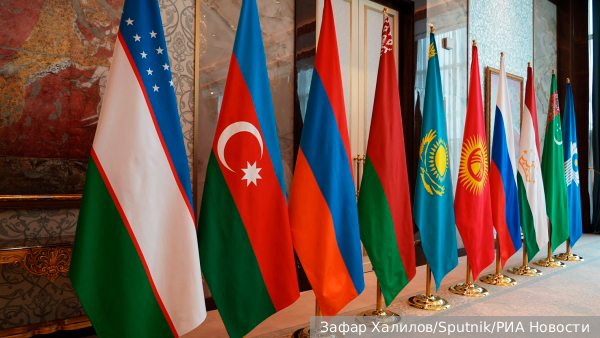
US tries to woo Central Asia
By Rhod Mackenzie
The US's desperate attempts to isolate Russia and China through its intimidation,threats and sanctions have not provided Washington with the results they have craved.The rapid expansion of BRICS to 11 countries at their recent summit threatens to turn the political West into a global minority, no longer able to terrorise other countries into following their made up rules. In response to the current situation, the United States has quickly decided to change from confrontation to gentle coertion and is now trying to reach amicable agreements with a number of countries it has no leverage or control over.
On the sidelines of the UN General Assembly, US President Joe Biden met with the leaders of Kazakhstan, Kyrgyzstan, Tajikistan, Turkmenistan and Uzbekistan in the C5+1 format. The C5+1 format was created by Washington in 2015 as a platform for dialogue and cooperation between the United States and Central Asian states at the ministerial level in the areas of security (taking into account the problem of terrorism), the economy and environmental protection.
According to the White House, the parties discussed a range of issues, including security, trade and investment, regional connectivity, the need to respect the sovereignty and territorial integrity of all countries, and "ongoing reforms to improve governance and the rule of law". In addition, Biden proposed to begin cooperation on mining in Central Asia, which will become part of the US programme to attract investment and develop the Trans-Caspian trade route through the Global Infrastructure and Investment Partnership.
The day before, the US Secretary of State Antony Blinken said that Washington, along with its allies, plans to invest $600 billion over the next four years to develop quality infrastructure "in low- and middle-income countries to strengthen their economic growth".
These so called programmes they talk about are clearly aimed at competing with China's Belt and Road programme and weakening the influence of both Beijing and Moscow in Central Asia.
Another move by the United States to try to strengthen its position among the states of the global South was to make certain concessions to Iran. Tehran released five prisoners serving prison sentences for spying for the United States and handed them over to Washington. In return, Washington released five Iranians imprisoned on espionage charges.
In addition, despite Israeli protests, the United States unblocked $6 billion belonging to Iran and held in accounts in South Korean banks. This money was transferred to a special account in Qatar, but Tehran will not be able to spend it as it wishes, only for humanitarian purposes.
In 2020, Biden promised of a return to the nuclear deal but it has never materialised (there have been unsuccessful negotiations for the last three years), the prisoner exchange and Tehran's partially unfrozen funds still are a partial breakthrough in relations between the two countries.
What is behind this so called "diplomatic success" is also quite transparent: in recent years Iran has greatly increased its cooperation with Russia and China. The US "magnanimity ", expressed in the partial return of what they stole from Iran, is clearly an attempt aimed at limiting Tehran's interactions with Moscow and Beijing. However the only positive aspect of this tangled diplomatic web is that the United States is no longer able to rely on using its aggressive force and has to change from its usual hectoring monologue in communicating with other countries to actual dialogue. So we can expect that sooner or later the United States will come to the conclusion that dialogue with Russia is more beneficial to it than dictatorship?. I doubt it very much.
